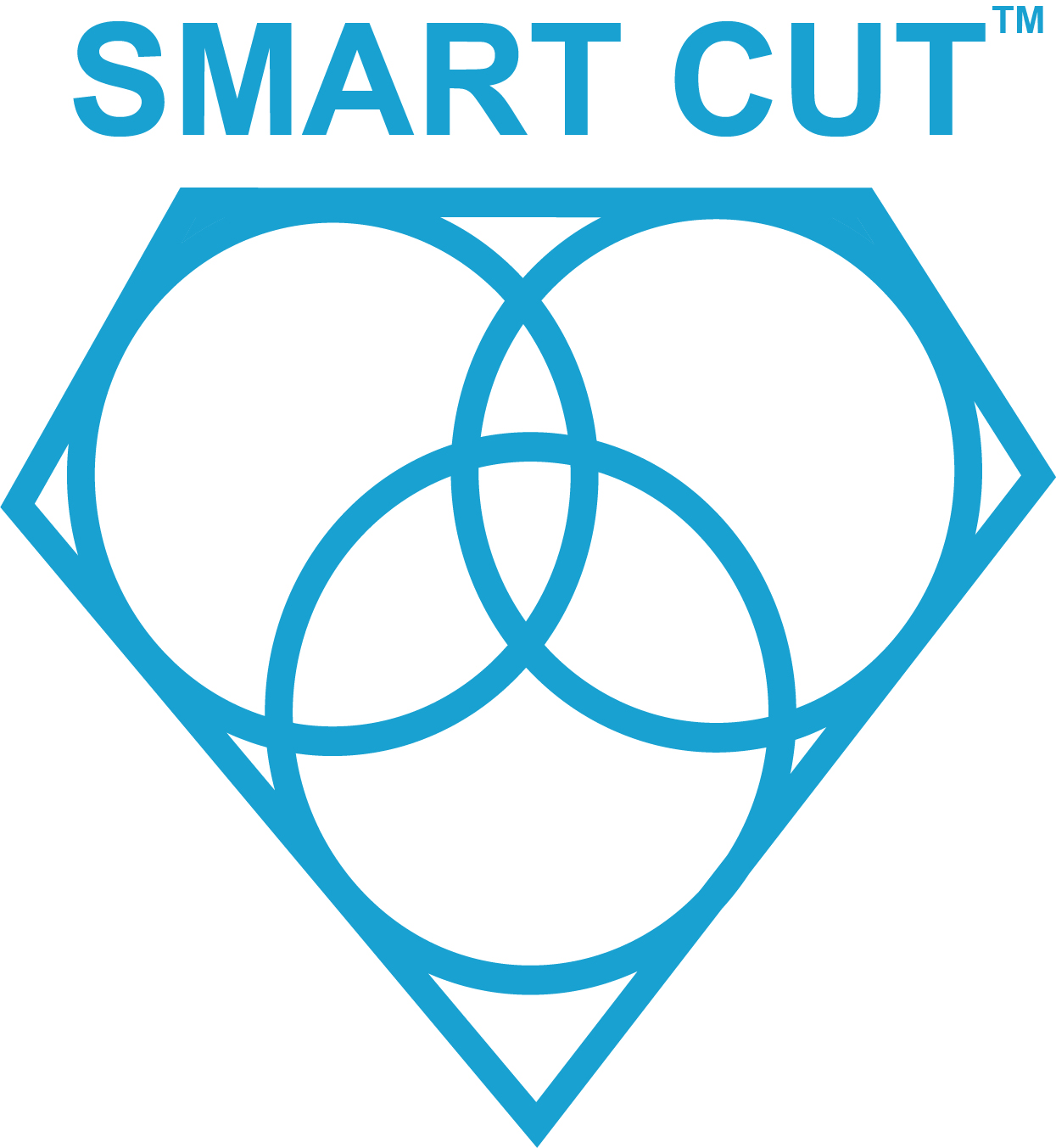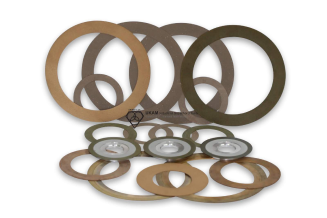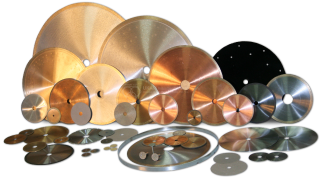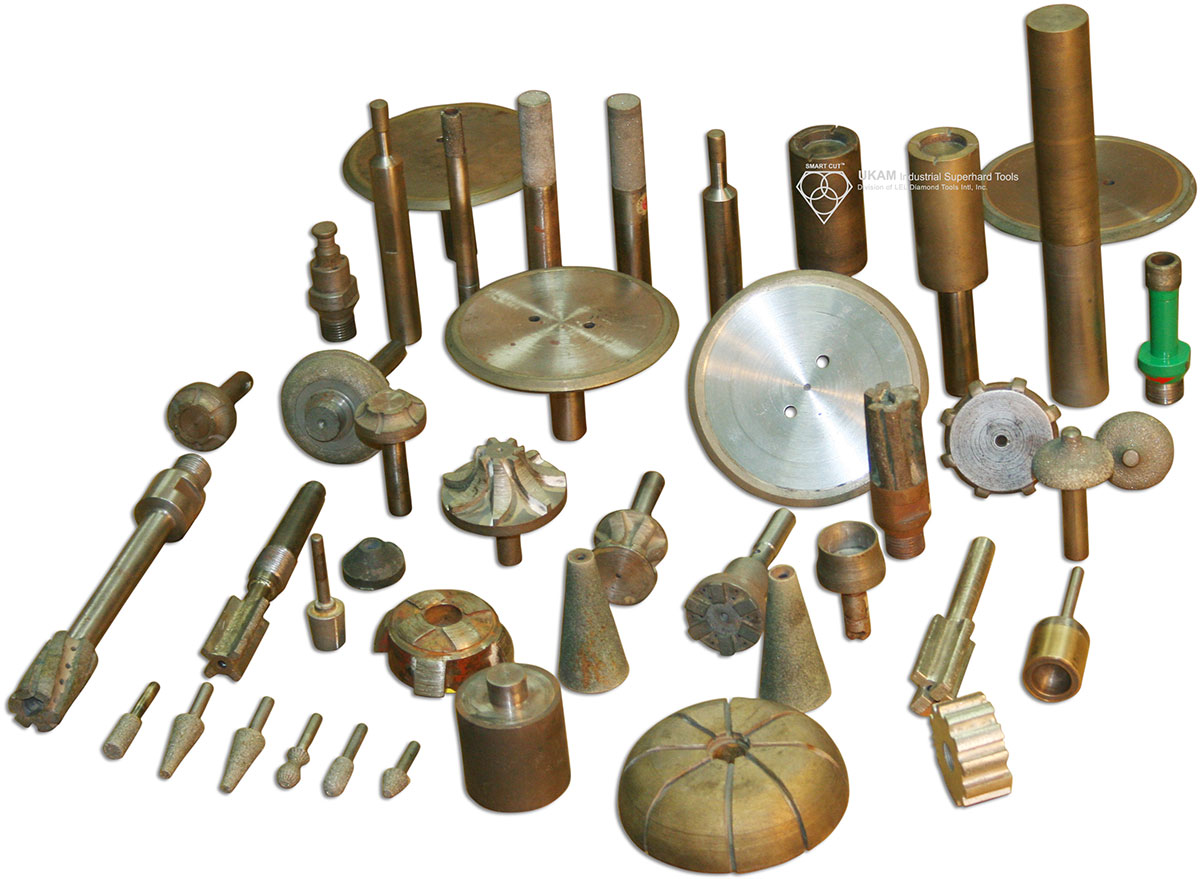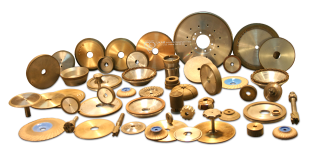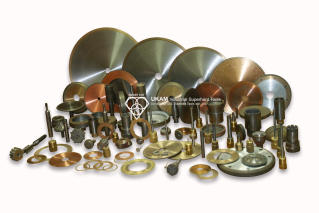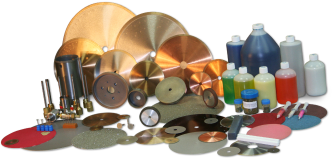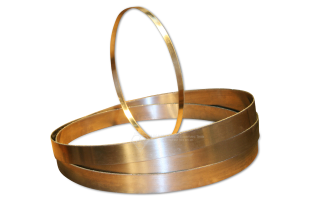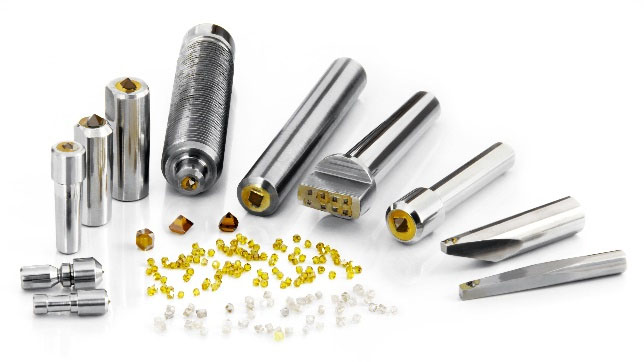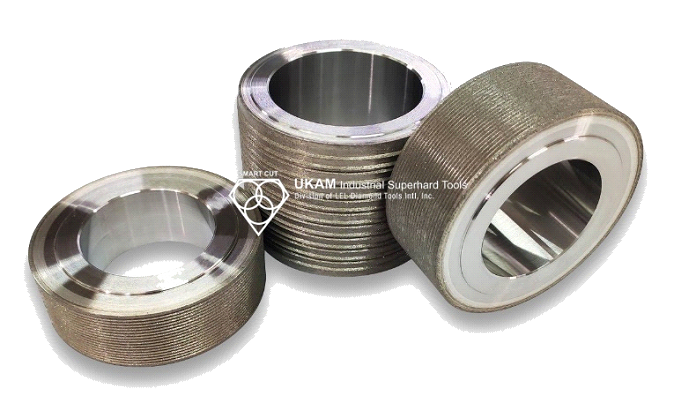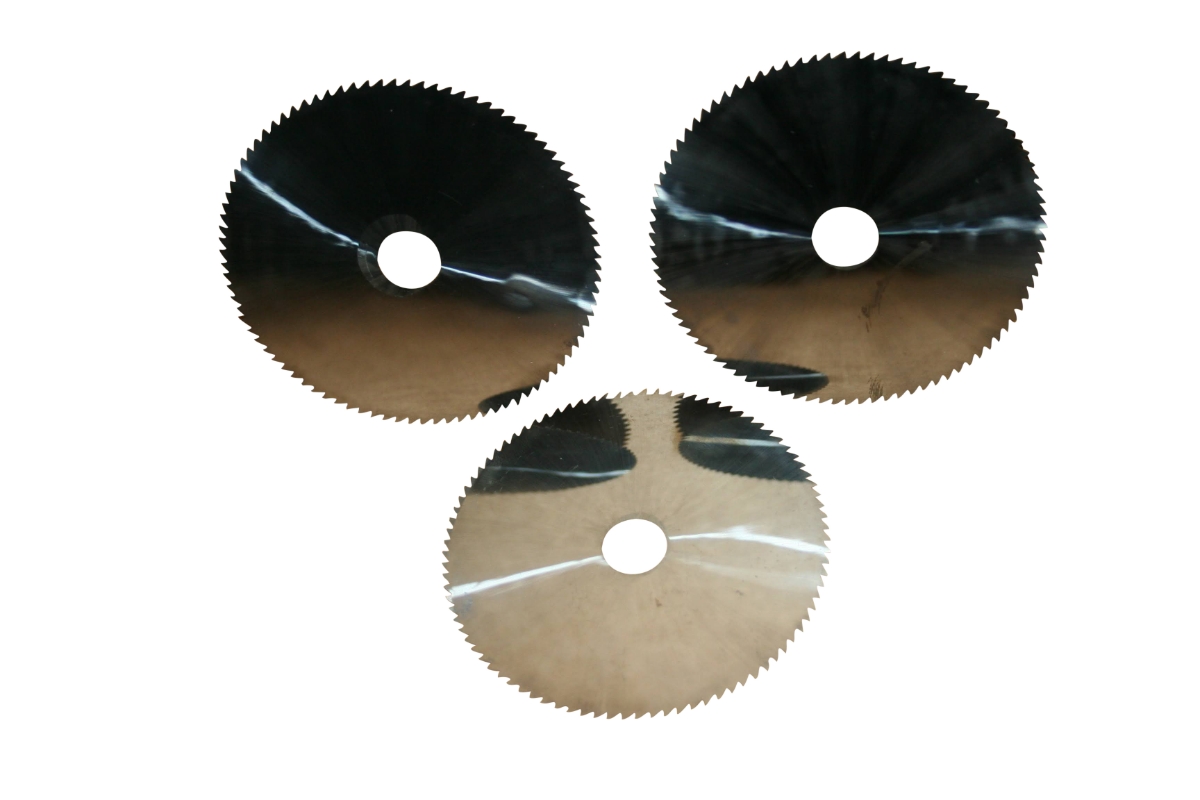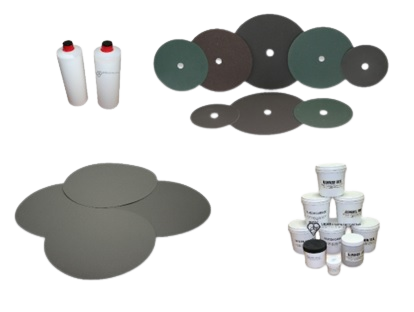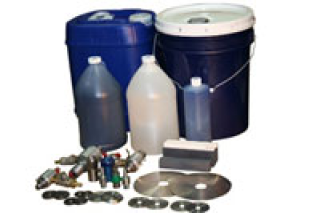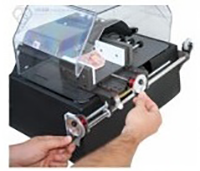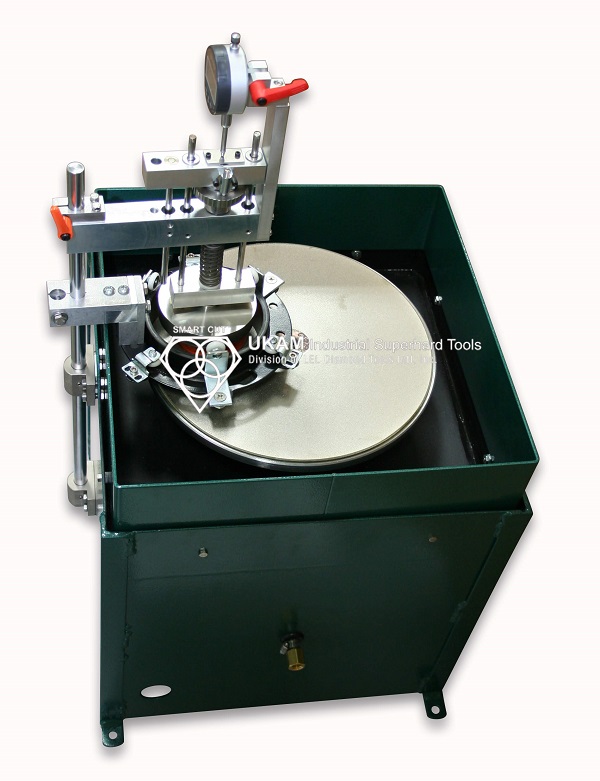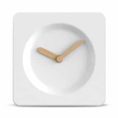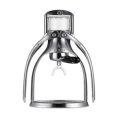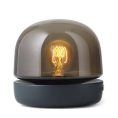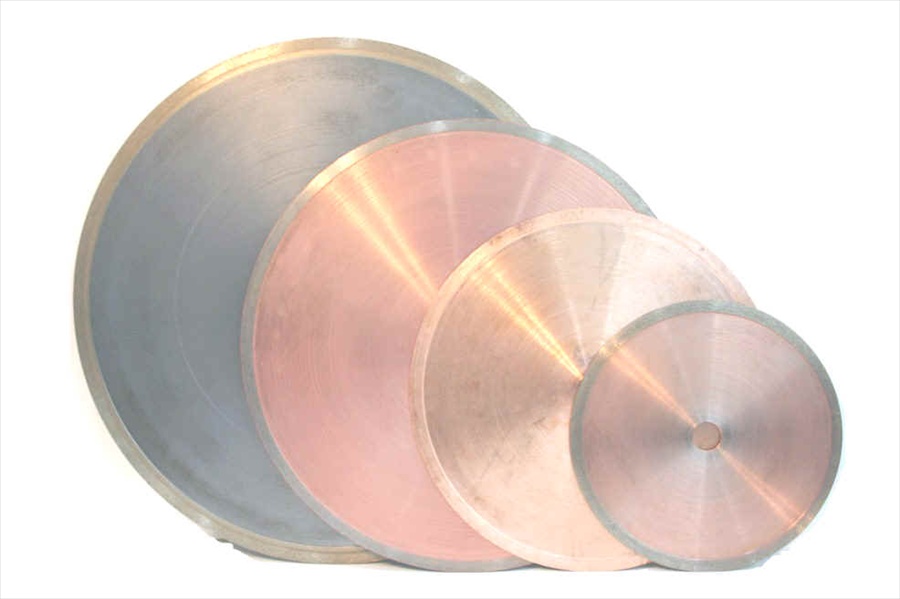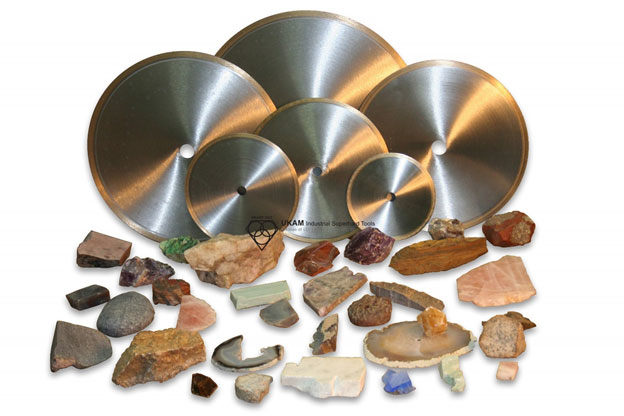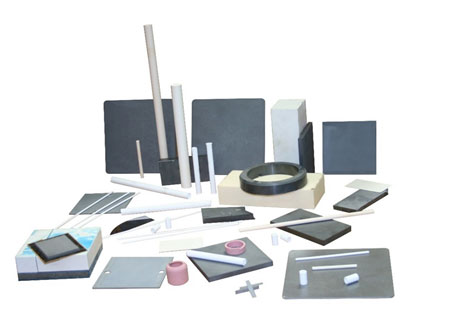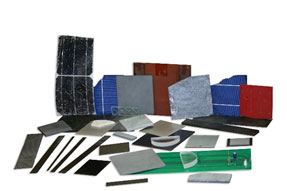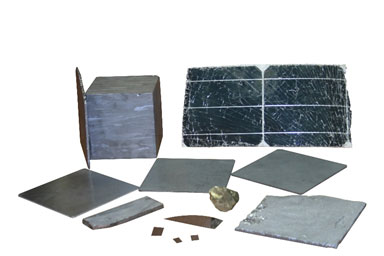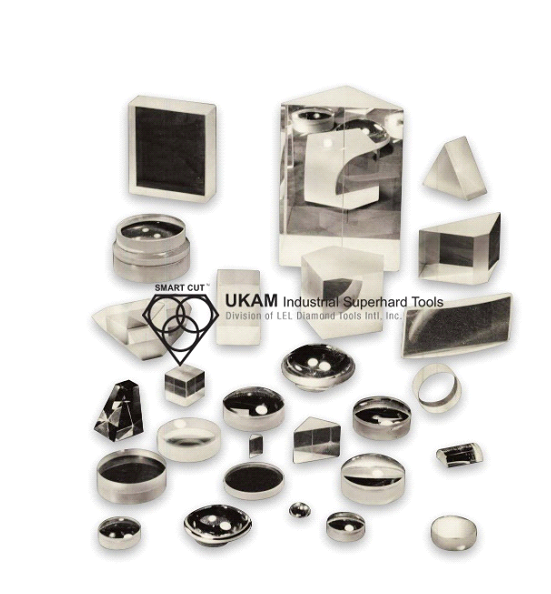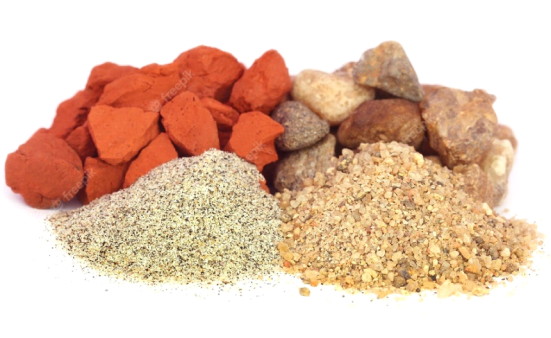
All diamond band saw blades are custom manufactured to fit your exact material, needs and application requirements. We will work with you to determine your needs, and recommend the right parameters for your specific material / application.
Blade Thicknesses Available: 0.20" to .035"
Blade Widths Available: 1/4" to 1.5"
Grit sizes available: 35 to 120 mesh
Blade edge configurations available: Continuous Rim, Segmented, Gulleted, Scallop Segment
Blade Backing Materials: Steel Alloy, Stainless Steel
Coolant methods: Wet, Dry

Diamond Band Saw Blades have proven the be an effective diamond machining tools on a large variety of materials and applications. With diamonds firmly attached to ultra thin metal body, Diamond Band Saw Blades remain the tool of choice for many diamond cutting and machining jobs. Perfect Solution for cutting large variety of ultra hand and brittle materials such as: quartz, glass, carbon, silicon, ceramics or composites. Large variety of diamond band saw blade specifications are available to fit any application. Blades are cut and welded to clients specification, weld is guaranteed for the life of the blade. Only the highest quality raw materials are used in the manufacturing process is carefully controlled, matching your application with the right bond type, grit size, bond hardness and composition.

A band saw's blade is diamond coated by electroplating, a process in which an electrical current deposits the coating onto the blade. This produces a hard, brittle Ni matrix that holds the diamonds in place and permits precise cutting on a variety of materials.

This process utilizes a flexible, toothed blade is welded into an endless band that rides on wheels driven by two pulleys and is guided through the work cut off or contour. Ideally Diamonds Band Saws Blades should be used on Band Saw Machines designed for this purpose. A friction saw is a special band saw capable of achieving band velocities of up to 15,000 sfpm or more.
How it Works
Material removal is accomplished in two steps:
Step 1: Frictional heat softens the substrate and the teeth scoop out the molten material.
Step 2: Carbon steel bands are used for flexibility to obtain maximum band life. Method is excellent for cutting extremely hard substrates.
Advantages
- Cuts Longer & Faster
The blades stay sharper throughout a longer life and can be reversed. - Cuts smoother
Minimal Vibration and high stability are features of the cutting action. - Cut Safer & Better
Their snag free action reduces the risks of breakages and allows more aggressive cutting - Cuts Cleaner
Minimal waste, whilst the cutting action reduces chipping and cut surface damage. - Cuts Cheaper
Long life, high performance and Consistent quality bring a significantly better ROI.
Specifications
Blade Thicknesses Available: 0.20" to .035"
Blade Widths Available: 1/4" to 1.5"
Grit sizes available: 35 to 120 mesh
Blade edge configurations available: continuous rim, segmented, gulleted, Scallop Segment
Blade Backing Materials: Steel Alloy, Stainless Steel
Coolant methods: Wet, Dry
Average Band Saw Blade Life: 40 to 80 hours. Some has shown to last as long as 192 hours.
Diamond Band Saw Blade Comparison
Wafering Blade Bond Types
Continous Rim
Segmented Rim
Gulleted Rim
Dotted Rim
Image


Sketch



Cross Section


Close Up




Bond Characteristics
Most commonly used diamond band saw blade. It can be used in almost any application. Its best suited for cutting thin wall and delicate materials.
Provides better transport of coolant and better chip removal, with softer, longer chipping materials. However the surface finish on material is somewhat rougher than left by continuous rim blade there should always be two teeth simultaneously engaging the material.
Faster and more aggressive cutting. Their best use is for dry cutting applications, where coolant cannot be used and for softer and more gummy materials.
Steel Backing Material
Stainless steel
Stainless steel
Carbon steel
Stainless steel
(Diamond/CBN)Sizes Available
25/35 to 325/400 mesh
25/35 to 325/400 mesh
25/35 to 325/400 mesh
60/80 to 140/170 mesh
Blade Width Available
¼”,1/2”,3/4”,1”,1.25”,1.5”-2”
¼”,1/2”,3/4”,1”,1.25”,1.5”-2”
½”,3/4”,1”,1.25”
1”, 1.5”

CONTINUOUS RIM Diamond Band Saw
Continuous Rim Diamond Band Saw Blades are the most commonly used diamond band saw blade. It can be used in almost any application. Its best suited for cutting thin wall and delicate materials.

GULLETED Diamond Band Saw
Gulleted Diamond Band Saw Blades are used for faster and more aggressive cutting. Theirbest use is for dry cutting applications, where coolant cannot be used and for softer and more gummy materials.
SEGMENTED RIM Diamond Band Saw
Segmented diamond band saw blades provides better transport of coolant and better chip removal, with softer, longer chipping materials. However the surface finish on material is somewhat rougher than left by continuous rim blade there should always be two teeth simultaneously engaging the material.
Applications For Diamonds Band Saw Blades
Material
Work Height (Inches)
Recommended Band
Edge Configuration
Band Speed (SFPM)
KERF Loss
Coolant
Quartz/Glass
1-6
6-10
10-18
18-30
30+
1" x .020"
1" x .025"
1" x .035"
1¼" x .040"
1½" x .040"
Continuous or Segmented
2000-2500
2000-2500
2000-2500
2000-2500
2000-2500
0.040"
0.055"
0.072"
0.075"
0.075"
Yes
Yes
Yes
Yes
Yes
Silicon (Electronic)
1-6
6-10
10+
1" x .020"
1" x .025"
1" x .035"
Continuous
1800-2200
1800-2200
1800-2200
0.040"
0.055"
0.072"
Yes
Yes
Yes
Silicon (Solar)
1-6
6-10
10-12
12+
1" x .020"
1" x .025"
1" x .035"
1¼" x .040"
Continuous
1800-2200
1800-2200
1800-2200
1800-2200
0.040"
0.055"
0.072"
0.075"
Yes
Yes
Yes
Yes
Ceramic
1-6
6-10
10+
1" x .020"
1" x .025"
1" x .035"
Continuous
1800-2200
1800-2200
1800-2200
0.040"
0.055"
0.072"
No
No
No
Carbide
1-4
4-6
3/4" x .020"
1" x .020"
Continuous
1800-2200
1800-2200
0.035"
0.040"
No
No
Granite
1-4
4-8
8-12
12+
1" x .020"
1" x .025"
1" x .035"
1¼" x .040"
Continuous or Segmented
1800-2200
1800-2200
1800-2200
1800-2200
0.055"
0.072"
0.075"
0.075"
Yes
Yes
Yes
Yes
Marble
1-4
4-8
8-12
12-18
18+
1" x .020"
1" x .025"
1" x .035"
1¼" x .040"
1½" x .040"
Continuous or Segmented
2000-2500
2000-2500
2000-2500
2000-2500
2000-2500
0.040"
0.055"
0.072"
0.075"
0.075"
Yes
Yes
Yes
Yes
Yes
Pyrex
1-4
4-8
8+
1" x .020"
1" x .025"
1" x .035"
Continuous
1800-2200
1800-2200
1800-2200
0.040"
0.055"
0.072"
Yes
Yes
Yes
Masonry Materials
1-4
4-8
8+
1" x .020"
1" x .025"
1" x .035"
Continuous or
Segmented
1800-2200
1800-2200
1800-2200
0.040"
0.055"
0.072"
Yes
Yes
Yes
Carbon/Graphite
1-6
6-18
18-24
24-32
32-40
40+
1" x .020"
1" x .025"
1" x .035"
1¼" x .040"
1½" x .040"
2" x .040"
Segmented or
Gulleted
2000-2500
2000-2500
2000-2500
2000-2500
2000-2500
2000-2500
0.040"
0.055"
0.072"
0.075"
0.075"
0.080"
No
No
No
No
No
No
Fiberglass FRP
Any
1" x .020"
Gulleted
2000-2500
0.040"
No
Glass Reinforced Rubber
1-6
6-10
10+
1" x .020"
1" x .025"
1" x .035"
Segmented or
Gulleted
2000-2500
2000-2500
2000-2500
0.040"
0.055"
0.072"
No
No
No
Fiberglass Laminate
Any
1" x .020"
Gulleted
2000-2500
0.040"
No
Transite
Any
1" x .020"
Segmented
2000-2500
0.040"
No
Wire Reinforced Rubber
Any
1" x .035"
Continuous
2000-2500
0.072"
No
Asbestos/Cement Pipe
1-6 DIA
6-12 DIA
12+ DIA
1" x .020"
1" x .025"
1" x .035"
Segmented
2000-2500
2000-2500
2000-2500
0.040"
0.055"
0.072"
No
No
No
Friction Products
Any
1" x .035"
Segmented
2000-2500
0.072"
No
**Note that kerf loss is dependant on diamond grit selected.
Band Diamond Band Saw Blade Selecting Guid
Here are some recommendation on selecting the right diamond band saw blade for your application.

Band Saw Blade Cross Section
Cross section should be specified as wide and as thick as possible (as the application will allow). Please note the diameter of the pulley. Steel band thickness should be in the range 1:1000 with respect to the diameter by the type of cut. For straight cuts, specify the maximum possible band height.
For contours, band height should be selected as follows:
Smallest Cutable Radius (mm)
16
40
65
95
145
185
305
Band Height (mm)
6
10
12
15
20
25
30
Cutting Edge / Tooth Shape
In principle, continuous rim diamond band saw blade can be used of cutting all materials. The cutting edge is recommend for thin walled an delicate materials. If segmented band saw blade design is used, there should always be two teeth simultaneously engaging the material. The advantages of segmented design are better transport of coolant and better chip removal,with softer, long chipping materials. Howerver, the surface finish on the material is somewhat rougher.
Diamond Mesh/Grit Size
Recommended diamond size will very depending on application. Primary factors to determine proper diamond size include:
- Desired surface finish
- Desired cutting speed
- Cutting characteristics of material
- Cutting width
- Machine parameters
Long chipping materials should be cut with coarser diamond size band saw blades.
Diamond Band Saw Blade Setup Procedure
With new developments of advanced materials, the diamond band saw blade has played a key role in effective sawing and development of these materials. Proper use and installation of diamond band saw blade is critical to its cutting efficiency and life. The following suggestions, will help you get the most out of your diamond band sawing operation.
Step 1: Place new band saw blade over band saw machine wheels and through guides.
Step 2: Set band saw machine guides to .001" - .0015" over diamond band saw width.
Step 3: Place tensigage on the diamond band saw blade in intentioned condition.
Step 4: Zero gage, then tension to 1.5 units. Diamond Band Saw Blade tension should be set as low as possible to saw your material while still maintaining straight cuts.
Step 5: Run Diamond Band Saw Blade slowly to properly track on tires.
Step 6: Release the tension and retention to 1.5 units. Check the tension at beginning of each shift.
Step 7: Make sure your diamond band saw blade is not toughing back up bearings. Rubbing back up bearings will cause premature failure in the backing material if the diamond band.
Step 8: Set table speed to cut at four square inches per minute. This is only a recommended starting point. Keeping accurate records on every band saw blade will help you adjust the feed rate to optimize the total square inches of sawing for one diamond band saw blade.
Step 9: Set band speed to approximately 1500-2500 surface feet per minute. Again, keep accurate records on every band.
Step 10: Allow only enough table feed to permit the diamonds to cut freely. Overfeed will cause the diamond band saw blade to rub excessively against back up bearings resulting in early fatigue.
Step 11: When stopping production reduce diamond band saw blade speed to eliminate start up shock.
Step 12: Make sure to remove tension from diamond band saw blade when not in use.
Step 13: Occasionally dress diamond band saw blade will clean, sharpen and renew the diamonds.
Step 14: Weekly inversion of the diamond band saw blade may improve cutting life.
It is recommended that diamond band saw blades be used on most saws, ideally ones with 26" wheels or larger. This set up procedure will help reduce the problam of early diamond band saw blade fatigue.
Diamond Band Saw Machine Maintenance
Proper mounting and use of diamond band saw blade will insure maximum productivity and life of both your diamond band saw blade and machine. Here are some recommendations and steps to follow on a daily basis:
Guide Blocks - Checks periodically for war and regrind as neede. Setting the guides for .001" - .0015" band clearance is important for straight cuts.
Backup Bearings - Check periodically for war.
Uppper Guideposts - Ste as close to work piece as possible.
Upper Wheel Slide Assembly - As this area seriously effects band tensioning it must be kept clean. Flush the area with coolant at least once per day.
Lower wheel Area - Again flush with coolant once per day.
Tires - Grooves in the tires must be kept clean to prevent hydroplaning and to maintain proper tracking. Check during installation of each new band saw blade.
Overall Cleanliness - Wiping sown the machine daily can help remind everyone to maintain all the important parts inside the Machine.
Operator Training - The most important of all, including keeping accurate records on each and every diamonds band saw blade.
Proper setup, use and maintenance of your diamond band saw blades will optimize blade life as well as increase total square inches of material cut by one diamond band saw blade.
